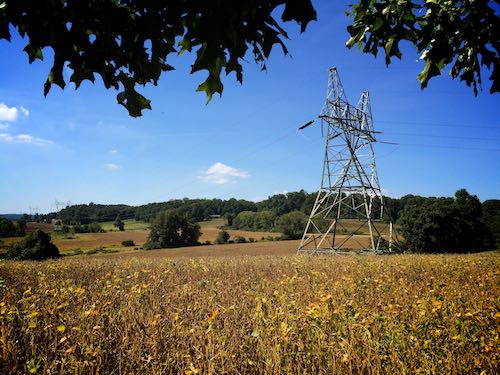Managing for Nature In Rights of Ways
By Daniel Barringer, Preserve Manager
I’ll be giving a talk next week for Penn State Extension in Berks County on the subject of managing utility rights-of-way for natural habitat.
Obviously the construction of pipelines and power lines can have profound negative effects on natural habitats, particularly as they go through forested lands, causing fragmentation of the forest. But there are also undesirable effects from soil disturbance, and rights-of-ways can serve as pathways upon which invasive plants travel, helping them creep into adjacent natural areas.
We at Natural Lands Trust are not managing our lands for edge species that thrive on these transitional areas between meadow and forest—those are species that are already doing well since most of suburban development already creates edge habitat: deer, bluejays, and raccoons, to name a few. We’re managing our forested lands for interior forest-dwelling species such as the neotropical migrant songbirds that are currently in decline. We’re managing our open lands as meadows for grassland-nesting species of birds that are also undergoing precipitous decline worldwide. And we’re managing specific habitats for rare species and communities. The introduction of a linear disturbance through these spaces is a challenge for most of these goals.
But these rights-of-ways, where they exist, can be managed in ways that reduce their impact, by creating plant communities on them that resist invasion by canopy-species of woody plants (that interfere with the utilities) and weeds that interfere with the natural communities of plants and animals that make our region unique.
I’ll be talking about strategies to create native warm-season grass meadows on these lands that require minimal maintenance, and the use of planted shrublands that shade out many of the species that would grow too tall under wires. Ideally these strategies require less herbicide and labor to maintain and result in lands that are better for wildlife.

